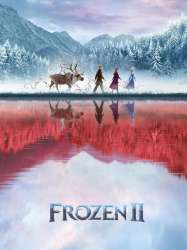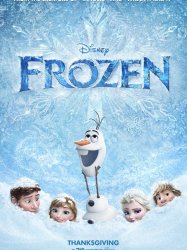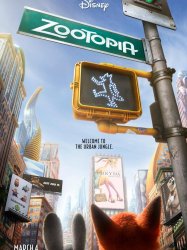Walt Disney Animation Studios

If you like this company, let us know!
Walt Disney Animation Studios, headquartered at the Walt Disney Studios in Burbank, California, is an American animation studio that creates animated feature films, short films, and television specials for The Walt Disney Company. Founded on October 16, 1923, it is a division of The Walt Disney Studios. The studio has produced 54 feature films, from Snow White and the Seven Dwarfs in 1937 to Big Hero 6 in 2014.
Originally founded as Disney Brothers Cartoon Studio in 1923 and incorporated as Walt Disney Productions in 1929, the studio was exclusively dedicated to producing short films until it expanded into feature production in 1934. In 1983, Walt Disney Productions named its live-action film studio Walt Disney Pictures. During a corporate restructuring in 1986, Walt Disney Productions was renamed The Walt Disney Company and the animation division, renamed Walt Disney Feature Animation, became a subsidiary of its film division, The Walt Disney Studios. In 2006, Walt Disney Feature Animation took on its current name, Walt Disney Animation Studios after Pixar Animation Studios was acquired by Disney in the same year.
For much of its existence, the studio was recognized as the premier American animation studio; it developed many of the techniques, concepts, and principles that became standard practices of traditional animation. The studio also pioneered the art of storyboarding, which is now a standard technique used in both animated and live-action filmmaking. The studio's catalog of animated features is among Disney's most notable assets, with the stars of its animated shorts – Mickey Mouse, Donald Duck, Goofy, and Pluto – becoming recognizable figures in popular culture and mascots for The Walt Disney Company as a whole.
Walt Disney Animation Studios, today managed by Edwin Catmull and John Lasseter (who also manage Pixar), continues to produce feature films using both hand-drawn animation and computer-generated imagery (CGI). Its 55th and 56th features, Zootopia and Moana, are currently in production; the former is scheduled for release on March 4, 2016, and the latter is scheduled for release on November 23, 2016.
Best films
Filmography of Walt Disney Animation Studios (123 films)
Production

Ben and Me (1953)
, 25minutesDirected by Hamilton Luske
Origin USA
Genres Comedy, Animation
Themes Films about animals, Political films, Children's films
Actors Sterling Holloway, Charles Ruggles, Hans Conried, Bill Thompson
In present day, two tour groups are simultaneously visiting a statue of Benjamin Franklin. The human tour group in front of the statue discusses Franklin's life and achievements, while the leader of a mouse tour group which is standing at the top of Franklin's hat reveals the contributions of a mouse named Amos to Franklin's career.
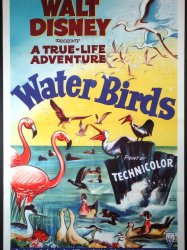
Water Birds (1952)
, 30minutesDirected by Ben Sharpsteen
Origin USA
Genres Documentary
Themes Environmental films, Documentary films about environmental issues, Documentary films about nature, Children's films
Actors Winston Hibler
Water Birds est un court métrage documentaire de 1952 réalisé par Ben Sharpsteen. Le film plonge dans les eaux calmes des lagunes et des marais jusqu'aux étendues bleues et sauvages des vastes océans, pour découvrir la beauté et la variété de leurs oiseaux majestueux, chacun parfaitement adapté à son habitat. Il a remporté l'Oscar du meilleur court métrage.
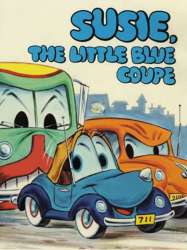
Susie, the Little Blue Coupe (1952)
, 8minutesDirected by Clyde Geronimi
Origin USA
Genres Comedy, Animation
Themes Transport films, Films about automobiles, Road movies, Children's films
Actors Sterling Holloway, Stan Freberg, June Foray
Susie is a small blue coupe on display in a dealer showroom who is bought by a well-to-do man who is taken with her. Thrust into high-society, she finds herself surrounded by much larger, more luxurious cars but eventually makes do. She is pampered, but time takes its toll on her, mechanically and cosmetically; eventually, her owner trades her in. A second man buys her but her new life is much less pampered, being left outside in the cold and being poorly maintained. One night, she is stolen, chased by the police and totaled in the resulting wreck. Rotting in a junkyard, all looks hopeless for Susie when a young man notices her, buys her, and with the help of his friends, completely restores and revives her into a brand new hotrod.

Cinderella (1950)
, 1h14Directed by Wilfred Jackson, Clyde Geronimi, Hamilton Luske
Origin USA
Genres Musical theatre, Fantasy, Musical, Animation, Romance
Themes Films about animals, Films about children, Films about magic and magicians, Films about music and musicians, Politique, Films about the labor movement, Les fées, Musical films, Political films, Children's films, Films about marriage, Films about royalty
Actors Ilene Megan Woods, Eleanor Audley, Verna Felton, Rhoda Williams, Jimmy MacDonald, Luis van Rooten
Cinderella is the beloved child of a widowed aristocrat. Anxious for his daughter to have a mother's love, he remarries to Lady Tremaine, with two daughters: Drizella and Anastasia. After her father dies unexpectedly, Lady Tremaine is revealed to be a cruel and selfish woman, and Cinderella is abused and mistreated by her stepfamily, who take over the estate and ultimately reduce her to being a scullery maid in her own home. Despite this, Cinderella grows into a kind and gentle young woman, befriending the animals in the barn and the mice and birds who live around the chateau.
 , 1h8
, 1h8Directed by Clyde Geronimi, James Algar, Jack Kinney
Origin USA
Genres Fantasy, Adventure, Horror, Musical, Animation
Themes Films about animals, Musical films, Children's films
Actors Eric Blore, Bing Crosby, J. Pat O'Malley, Basil Rathbone, Claud Allister, Campbell Grant
La Mare aux grenouilles Inspirée du Vent dans les saules de Kenneth Grahame (1908) , la première partie du film raconte l'histoire de Crapaud baron Têtard dont la passion débordante pour les automobiles inquiète grandement ses amis Taupe, Rat et Blaireau, surtout quand Crapaud échange son manoir ancestral à des fouines contre un bolide volé... Crapaud se met rapidement à flâner sans but sur les routes, jusqu'au jour où sa drôle d'escapade le mène derrière les barreaux. Ses amis s'acharnent à prouver son innocence en allant chercher des preuves dans son ancien manoir occupé par des bandits.

So Dear to My Heart (1948)
, 1h19Directed by Harold D. Schuster, Hamilton Luske
Origin USA
Genres Drama, Animation
Themes Children's films
Actors Bobby Driscoll, Luana Patten, Beulah Bondi, Burl Ives, Harry Carey, John Beal
Set in Indiana in 1903, the film tells the tale of Jeremiah Kincaid (Bobby Driscoll) and his determination to raise a black-wool lamb that had been rejected by its mother. Jeremiah names the lamb Danny for the famed race horse, Dan Patch (who is also portrayed in the film). Jeremiah's dream of showing Danny at the Pike County Fair must overcome the obstinate objections of his loving—yet tough—grandmother Granny (Beulah Bondi). Jeremiah's confidant, Uncle Hiram (Burl Ives), is the boy's steady ally. Inspired by the animated figures and stories, the boy perseveres.

Song of the South (1946)
, 1h34Directed by Wilfred Jackson, Harve Foster
Origin USA
Genres Musical, Animation
Themes Films about animals, Films about magic and magicians, Films about music and musicians, Mise en scène d'un lapin ou d'un lièvre, Musical films, Children's films, Mise en scène d'un mammifère
Actors James Baskett, Bobby Driscoll, Luana Patten, Ruth Warrick, Lucile Watson, Hattie McDaniel
Seven-year-old Johnny is excited about what he believes to be a vacation at his grandmother's Georgia plantation with his parents, John Sr. and Sally. When they arrive at the plantation, he discovers that his parents will be living apart for a while, and he is to live in the country with his mother and grandmother while his father returns to Atlanta to continue his controversial editorship in the city's newspaper. Johnny, distraught because his father has never left him or his mother before, leaves that night under cover of darkness and sets off for Atlanta with only a bindle. As Johnny sneaks away from the plantation, he is attracted by the voice of Uncle Remus telling tales "in his old-timey way" of a character named Br'er Rabbit. Curious, Johnny hides behind a nearby tree to spy on the group of people sitting around the fire. By this time, word has gotten out that Johnny is gone and some plantation residents, who are sent out to find him, ask if Uncle Remus has seen the boy. Uncle Remus replies that he's with him. Shortly afterwards, he catches up with Johnny, who sits crying on a nearby log. He befriends the young boy and offers him some food for the journey, taking him back to his cabin.

The Story of Menstruation (1946)
, 10minutesDirected by Jack Kinney
Origin USA
Genres Documentary, Animation
Themes Films about education, Medical-themed films, Films about drugs, Documentary films about law, Documentary films about health care, Court métrage éducatif de Disney, Children's films
Actors Gloria Blondell
The film uses animated diagrams to detail the menstrual cycle. The film's narrator, who is not identified in the credits, informs the viewer that "there is nothing strange or mysterious about menstruation", and it shows women engaged in such activities as bathing, riding a horse, and dancing during their menstrual cycles. The film's narration by actress Gloria Blondell also provides advice to avoid constipation and depression, and to always keep up a fine outward appearance.

A Knight for a Day (1946)
, 7minutesDirected by Jack Hannah, Jack Kinney
Origin USA
Genres Comedy, Animation
Themes Films about animals, Films about dogs, Children's films
Actors Pinto Colvig, June Foray, Billy Bletcher, Jack Mather
The story takes place at a jousting field in medieval Canterbury, incorrectly described as being in the British Empire, and features a jousting competition between Sir Loinsteak and Sir Cumfrence, the black knight, with a sportscaster-like announcer calling the action of the battle. The prize for this contest is the right to marry Princess Esmeralda.

Peter and the Wolf (1946)
, 16minutesDirected by Clyde Geronimi
Origin USA
Genres Musical theatre, Animation
Themes Films about animals, Films about children, Wolves in film, Musical films, Children's films, Mise en scène d'un mammifère
Actors Sterling Holloway
Disney's animated adaptation of Prokofiev's masterpiece, in which every character is represented musically by a different instrument. Young Peter decides to go hunting for the wolf that's been prowling around the village. Along the way, he is joined by his friends the bird, the duck and the cat.

The Three Caballeros (1944)
, 1h12Directed by Harold Young, Norman Ferguson, Clyde Geronimi, Jack Kinney, Bill Roberts
Origin USA
Genres Musical, Animation
Themes Films about animals, Sports films, Bullfighting films, Film d'animation mettant en scène un animal, Films about birds, Musical films, Children's films
Actors Clarence Nash, Carmen Molina, Aurora Miranda, Pinto Colvig, Georg Thomalla, Frank Graham
Donald Duck reçoit en cadeau d'anniversaire une énorme boîte. Il y découvre un projecteur cinématographique, des bobines de films, un livre et un disque. Elles contiennent des souvenirs et informations sur l'Amérique du Sud et le Mexique qui lui permettent de retrouver ses amis José Carioca et Panchito Pistoles, un coq vêtu en charro.

Victory Through Air Power (1943)
, 1h5Directed by Hal Roach, H. C. Potter, Charles Monroe Schulz, Clyde Geronimi, Fred Moore, Franklin Thomas, James Algar, Perce Pearce, Jack Kinney
Origin USA
Genres War, Documentary, Animation
Themes Politique, Transport films, Aviation films, Documentary films about war, Documentary films about historical events, Documentary films about technology, Political films, Documentary films about World War II, Children's films
Actors Art Baker
Le fait débute par un rappel historique. Il évoque les controverses liées au Général William Mitchell, pionnier de l'aviation militaire entre 1919 et 1936, année de sa mort. Il militait pour le développement d'une aviation ayant des bombardiers, mais sa hiérarchie croyait en la supériorité de la marine de guerre. En 1925, il fut même rétrogradé comme colonel.
 , 10minutes
, 10minutesDirected by Clyde Geronimi
Origin USA
Genres Drama, War, Documentary, Animation
Themes Politique, Documentary films about war, Documentary films about historical events, Hitler, Political films, Documentary films about World War II, Children's films
Actors Art Smith
The film features the story of Hans, a boy born and raised in Nazi Germany, who is bred to become a merciless soldier.

Fall Out - Fall In (1943)
, 7minutesDirected by Jack King
Origin USA
Genres Comedy, Animation
Themes Films about animals, Military humor in film, Politique, Films about birds, Political films, Mise en scène d'un canard, Children's films
Actors Clarence Nash
Donald, an Army private, is on an all-day march with his unit. He keeps up his enthusiasm for the first few miles and starts to mark them off on the pack of the soldier in front of him, but fatigue and unforgiving weather conditions - first rain, then snow, then heat - soon take their toll on him. By the time the unit commander calls a halt for the day, the tally marks cover not only the soldier's pack, but the backs of his arms, legs, and helmet as well. An exhausted and famished Donald quickly dumps out a mountain of gear from his pack, but he is not allowed to eat until he has set up his tent. It takes him only seconds to do this, but the tent soon collapses and he ends up struggling long into the night to set it up again. He dumps a bucket of water over the sagging canvas, causing it to shrink and rip in half.

Bambi (1942)
, 1h8Directed by Paul Satterfield, Dave Hand, James Algar, Graham Heid, Samuel Armstrong, Bill Roberts
Origin USA
Genres Drama, Musical, Animation
Themes Films about animals, Films about magic and magicians, Films about music and musicians, Film d'animation mettant en scène un animal, Musical films, Children's films
Actors Donnie Dunagan, Hardie Albright, Paula Winslowe, Jonathan Sutherland I, Peter Behn, Sam Edwards
A doe gives birth to a fawn named Bambi, who will one day take over the position of Great Prince of the Forest, a title currently held by Bambi's father, who guards the woodland creatures from the dangers of hunters. The fawn is quickly befriended by an eager, energetic rabbit named Thumper, who helps to teach him to walk and speak. Bambi grows up very attached to his mother, with whom he spends most of his time. He soon makes other friends, including a young skunk named Flower and a female fawn named Faline. Curious and inquisitive, Bambi frequently asks about the world around him and is cautioned about the dangers of life as a forest creature by his loving mother.
 Connection
Connection
